Be not afraid. The isle is full of noises,
Sounds, and sweet airs, that give delight, and hurt not . . . .
—William Shakespeare, The Tempest
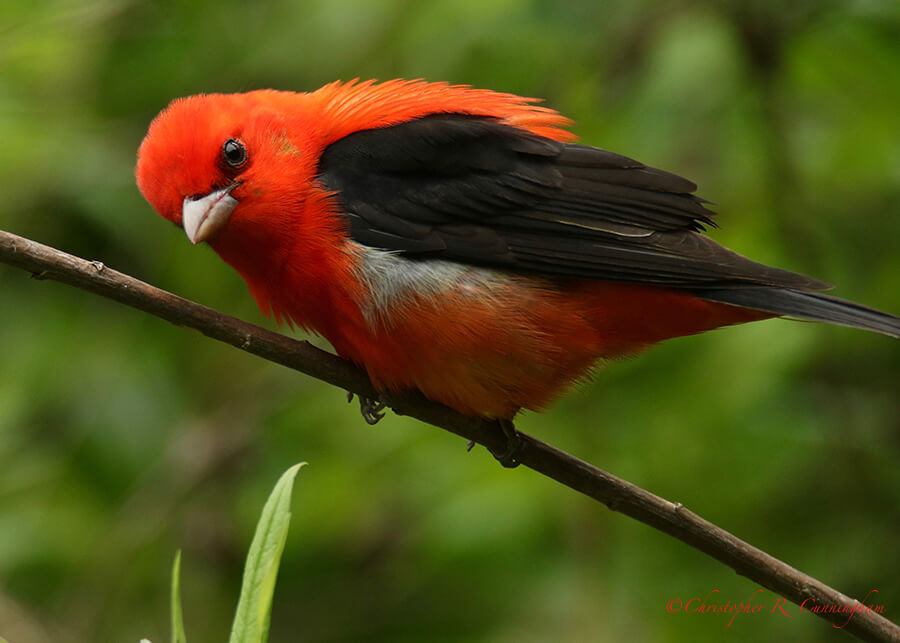
Songbird migrant traps along the Gulf Coast must be considered some of the best birding sites in the U.S. These special places are the first refuges that trans-Gulf migrants encounter when they make land-fall in spring. They are also the last terra firma birds exploit before flying south across the Gulf of Mexico in fall. The best migrant traps are full of arthropods, fruits, flowers, and succulent plant buds and have sources of fresh water and ample vegetation for cover. Along the Gulf Coast, well-drained, topographically higher areas on barrier islands and the coastal mainland (mottes) sometimes contain patches of trees, often live oaks, that provide shade from the blistering sun and hiding places from predators while birds rest, fatten, and rehydrate for a few hours to a few weeks.
Although we have only been serious birders for about five years, we have birded a number of Neotropical songbird migrant traps from Dauphin Island, Alabama to Paradise Pond, Texas. Other than a few exceptional places (like Upper Beaver Meadows, Rocky Mountain State Park, Santa Ana National Wildlife Refuge, or Cave Creek, Arizona) these migrant traps are some of the very finest birding we’ve ever experienced. This discussion is really just an introduction to a topic that could fill volumes. There are probably hundreds of such places along the Gulf Coast that meet the biological needs of migrating birds, but here I only discuss impressions of some of the more famous ones we’ve visited. Shorebird migrant traps like Bolivar Flats or Rollover Fish Pass are a separate phenomenon to be considered at a later date.
With the exception of a few hours spent on the east side of Mobile Bay birding near Fort Morgan, Dauphin Island is the most eastern of the Gulf Coast migrant traps we have birded. Dauphin Island is a nirvana for birders that oozes charm and history. There are several major hotspots on the island that are well worth a visit. The Audubon Sanctuary is the most beautiful migrant trap I have ever seen. Gorgeous white sand beaches transition through a lightly vegetated back-beach dune zone with scattered conifers and oaks into a dense, conifer-dominated forest with a palmetto and sumac understory.
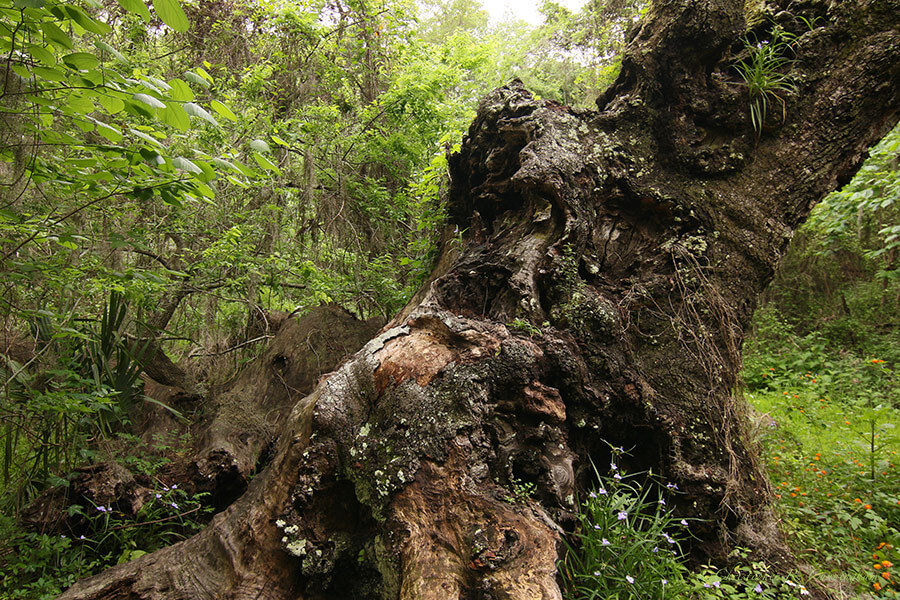
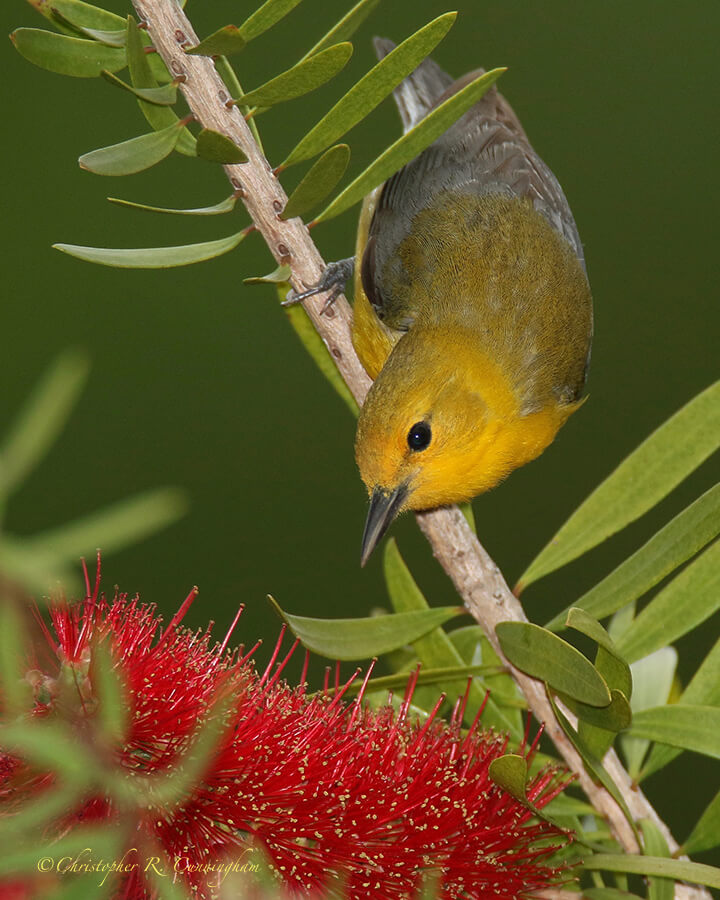
Shell Mound State Park is a glorious woods that immediately reminded me of Fangorn Forest from The Lord of the Rings. This park is essentially one big archaeological site: The hilly terrain is the result of the area being piled with oyster shell middens by Native Americans from the 12th through 16th Centuries AD. Another hotspot is a group of bottlebrush trees at the Catholic Cemetery that draws hummingbirds and songbirds galore, all greedy for a sip of nectar after an arduous trans-Gulf flight. We have also observed mixed flocks of Summer and Scarlet tanagers and Blue Grosbeaks on the grounds of Fort Gaines, the last major Confederate stronghold on the Gulf of Mexico to fall to Union forces during the Civil War, on the easternmost tip of the island.
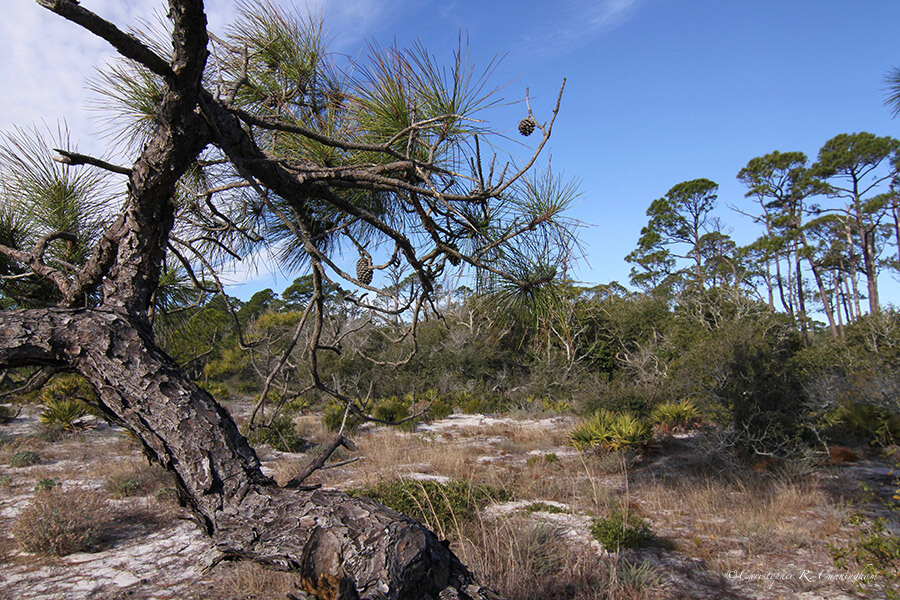
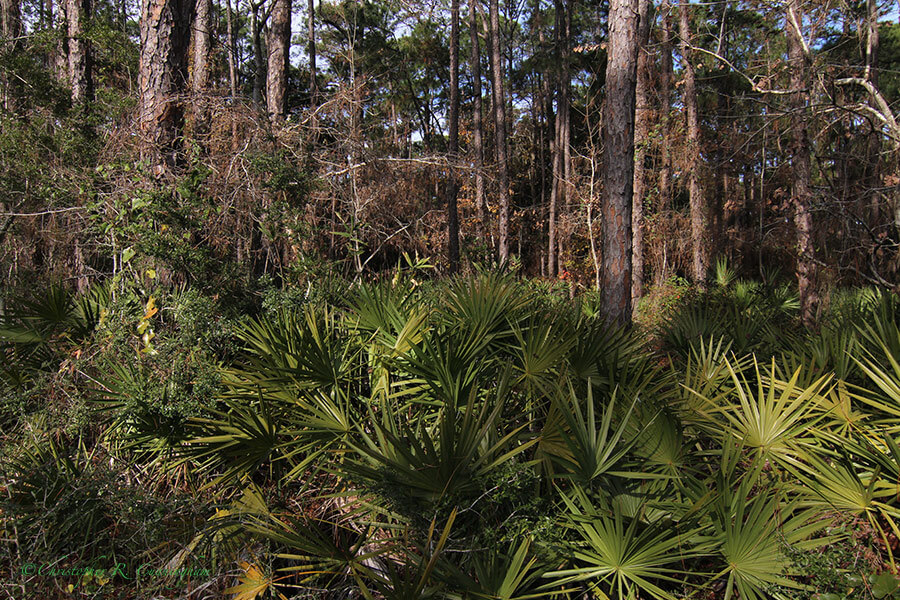
Between Alabama and home is Grande Isle, Louisiana, a major migrant trap. Unfortunately, we have not yet visited this area . . . but it is on the list . . . .
In any case, moving west, The Texas Ornithological Society’s (TOS) Sabine Woods Sanctuary, Texas is an oak motte migrant trap atop a chenier (beach ridge) across SH 87 from Texas Point National Wildlife Refuge, and we have had some success birding for songbirds there during both fall and spring migrations. The sanctuary encompasses a diversity of habitat including woods, prairie, thickets, and ponds that birds can typically be observed drinking from and bathing in during migrations.
Compared with Dauphin Island, the TOS Sabine Woods Sanctuary is lightly visited. This is likely due to a number of factors: It is a private preserve open to Texas Ornithological Society members only, and it is fairly remote from large cities (Port Arthur being the nearest). Sabine Woods is also quite hostile: the biting insects can be brutal. Perhaps this is due to its proximity to extensive salt marsh habitat like Texas Point. Marshy McFaddin National Wildlife Refuge is also just down the road. Generally after a visit on a warm day, spring or fall, I will be pretty chewed up. On one visit, Elisa and I were literally chased out of the sanctuary by swarms of mosquitos, gnats, and biting flies.
On another occasion, something bit me on the back through my shirt, and the wound it produced bled profusely, alarmingly so, no doubt the result of injection of some anti-coagulant. When I asked my doctor about it he said: “There is quite a bit we don’t know about medical entomology.” Small comfort. And ever since getting a bad case of poison ivy at Myakka River State Park in Florida a few years ago, I have been careful (nay paranoid) not to touch plants unless absolutely necessary. I have come away from Sabine Woods with some weird, bumpy, botanical-looking rashes, perhaps from poison ivy, perhaps not.
Despite the challenges, Sabine Woods is worth the trip. I have seen two mountain lions in Texas, one at Sabine Woods. It is also a great place to look for Loggerhead Shrike victims, like grasshoppers, frogs, lizards and mice, impaled on thorns and barbed-wire fences in the prairie along the northern margin of the sanctuary. This is certainly a place to keep one’s wits about oneself, though.
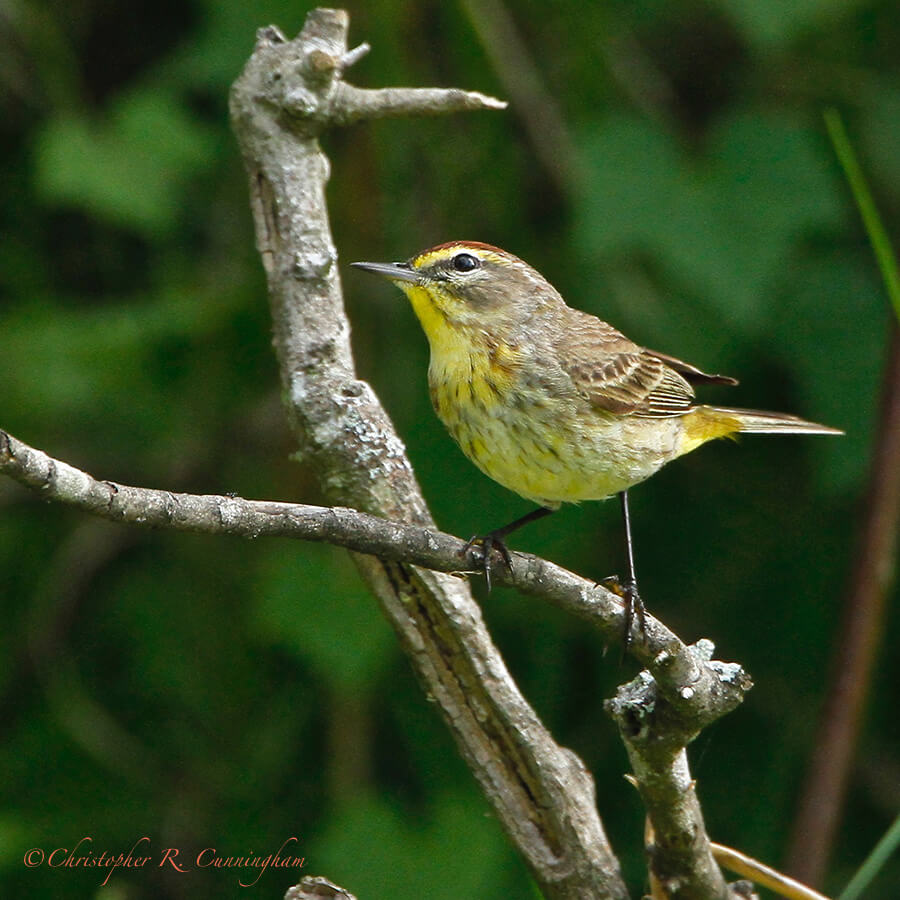
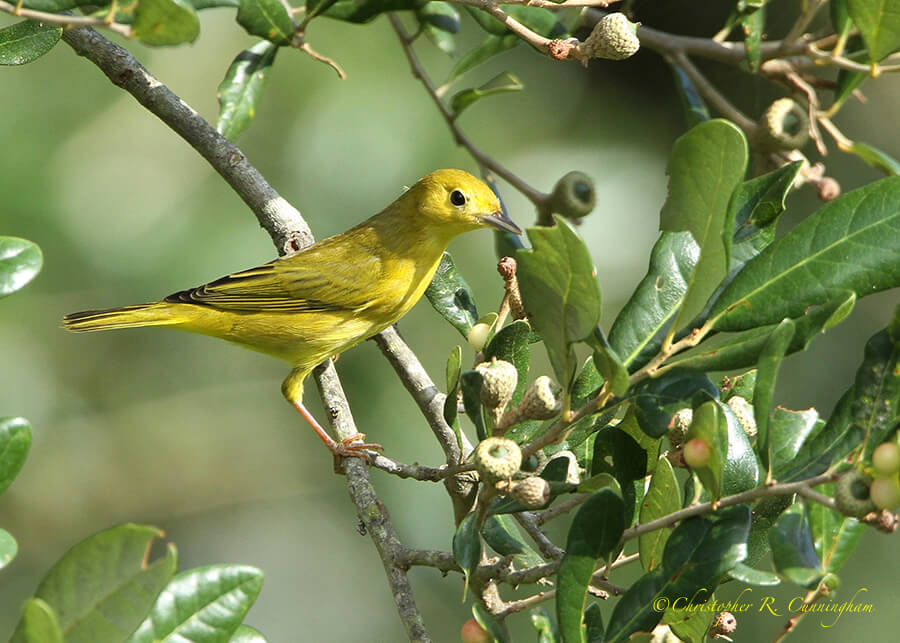
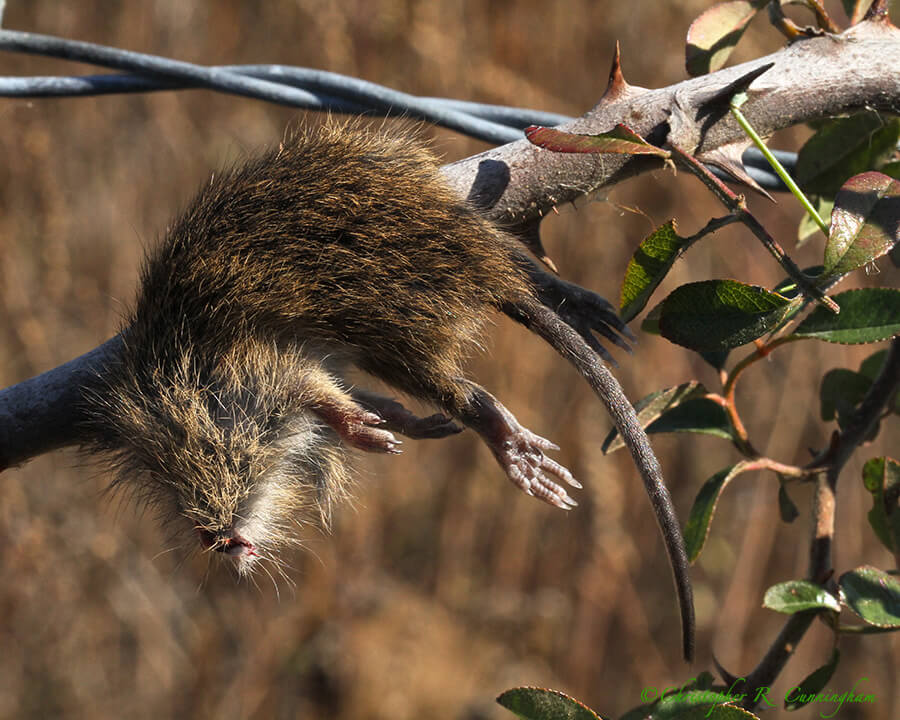
Continuing west down the coast, the next migrant traps we visit are on High Island, Texas. Houston Audubon Society Boy Scout Woods Bird Sanctuary is among the most famous migrant traps on the Texas Coast and likely has the highest documented species count with well over 330 species. However, it is often crowded during migrations, and because it is such a well-known place to Texas birders, I will limit my comments.
Frankly, we’ve sometimes found visitors to Boy Scout Woods to be rude and anti-photographer, although the vast majority are lovely people. I’ve witnessed some unpleasant screeching matches between visitors “getting in each other’s way” and have had snarky comments directed at me for nothing more than standing around with a camera on a tripod. To avoid such silliness, the nearby diverse patch of habitat known as the Houston Audubon Society Smith Oaks Bird Sanctuary, however, is much less crowded (except the rookery which is simply a fantastic place and justifiably busy) and a highly recommended place to shoot macro as well as migrant songbirds, flowers and insects being profuse in the spring. Honeysuckle is especially prolific here. Enough said.
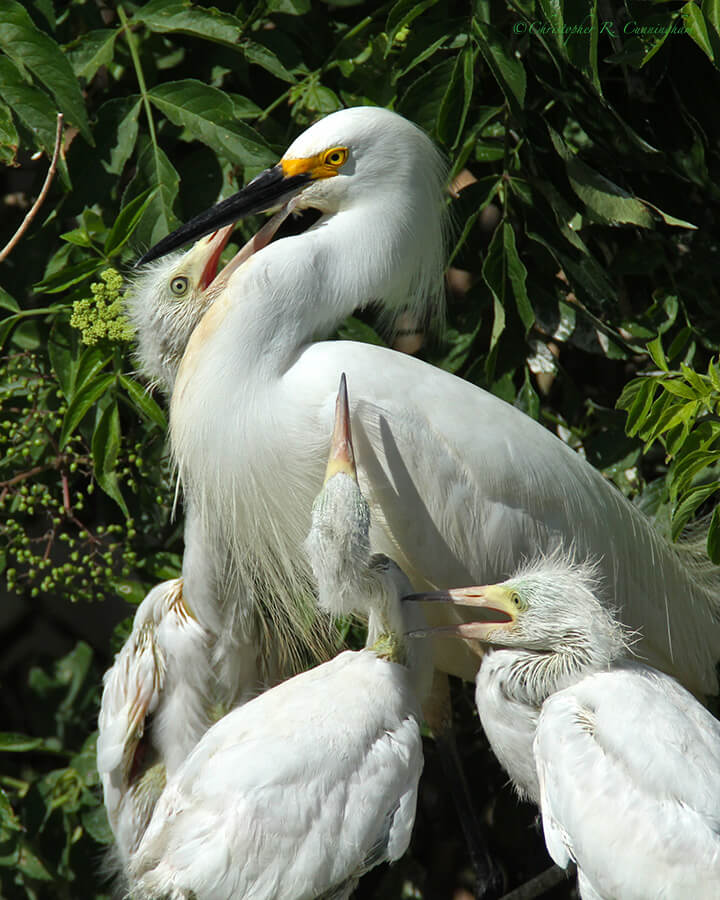
Next down the coast is Pelican Island. We used to bird the Texas A&M Galveston preserve there up until about two years ago when a major construction project made access to a grove of mulberry trees impossible. In spring, this group of trees was often hopping with orioles, tanagers, Indigo Buntings, and Dickcissel. It was also a great spot to see Eastern Kingbirds and Scissor-tailed Flycatchers among the thickets and scattered patches of trees and prairie. We saw our first Cerulean Warbler here.
This spot was/is(?) really quite odd, though. There used to be a sign that read “No Birdwatching Without Permission,” or some such thing near the parking area, and birder friends have reported being chastised by the police for not complying. Permission was to be obtained from the campus police. Strangely, whenever you went in to the campus police station to get permission, the police acted puzzled by the request, even though they acknowledged that birders were expected to get permission. Weird. We hope to return again to see the post-construction state of birding at this site.
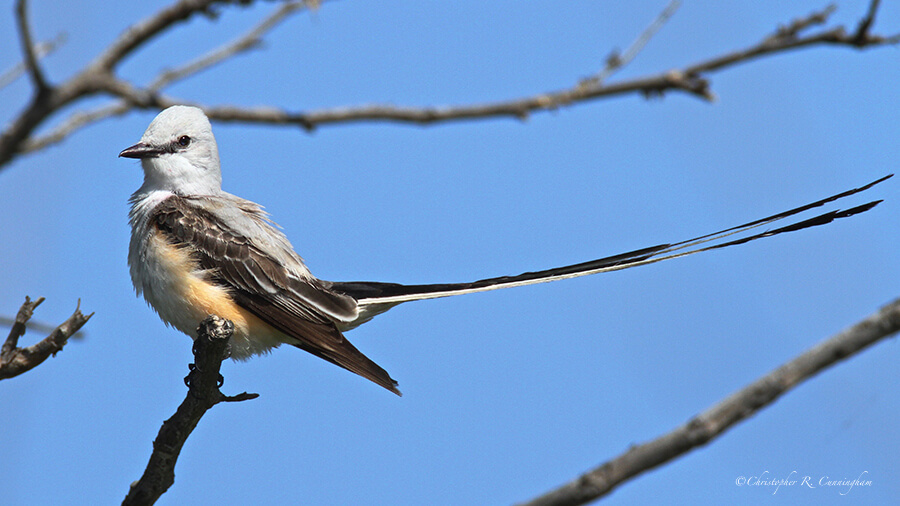
Of all the Gulf Coast migrant traps, we visit Lafitte’s Cove, Galveston Island most often. This is because of proximity and excellence. I have often written about challenges in photo-birding Lafitte’s Cove. For many, the number one problem is the human landscape: Lafitte’s Cove is well known to the birding community, especially photographers. It’s not Mcgee Marsh (yet), but it’s moving in that direction.
Travel, especially back and forth to Houston, can also be a living hell if not carefully planned. SH 288 can be a help in getting to/from Lafitte’s Cove from Houston, but might not be a natural choice for a casual birder simply inspecting a map. Birders from outside Houston would likely spend the night on Galveston, thus avoiding the horrors of I-45 and its never-ending boondoggle construction projects, assuming they departed Galveston during the wee hours.
Biting insects at Lafitte’s Cove are modest, more than Brazos Bend State Park, for example, but far less than any other migrant trap discussed in this article. I have returned from Lafitte’s Cove annoyed because of birders yakking too loudly in designated “quiet zones” (yeah, right) or snarky comments about “photographers,” but I’ve never returned blood-spattered and feeling like I’ve been through the wringer as I have from Sabine Woods.
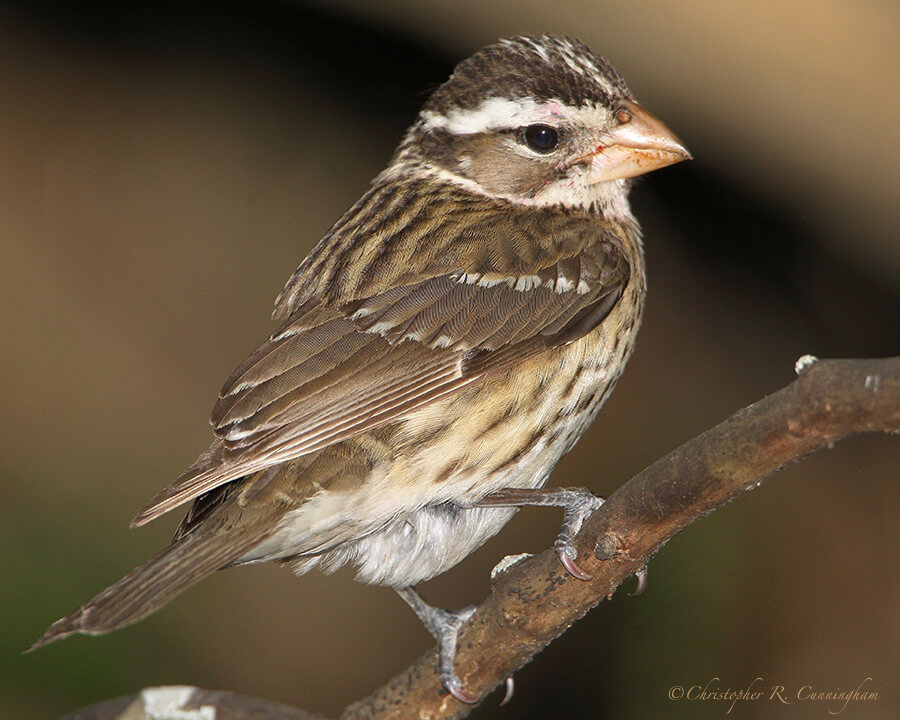
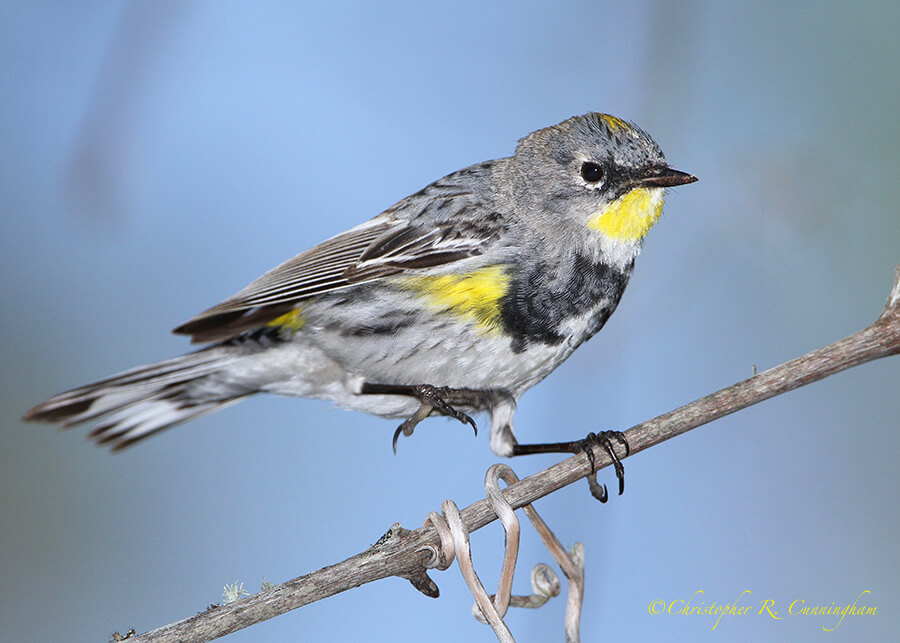
As expected, the excellence of Lafitte’s Cove stems from the diversity of habitat present. The main attraction for birders is the oak motte where hungry and thirsty birds gobble bugs and drink from the drippers. But there are also several large ponds and associated marshes for ducks, waders, and shorebirds, and a wildflower-strewn prairie. Great Egrets act more like Cattle Egrets here and wander across the grassy areas hunting for lizards, sometimes even venturing into the motte. And the motte is very rich with plant and animal foods for birds. Lantana, wild rose, mulberry, and coral bean trees occur in the sanctuary. Bottlebrush trees grow in yards in the neighborhood adjacent to the sanctuary. The nature of Lafitte’s Cove is amazing . . . the human landscape, challenging.
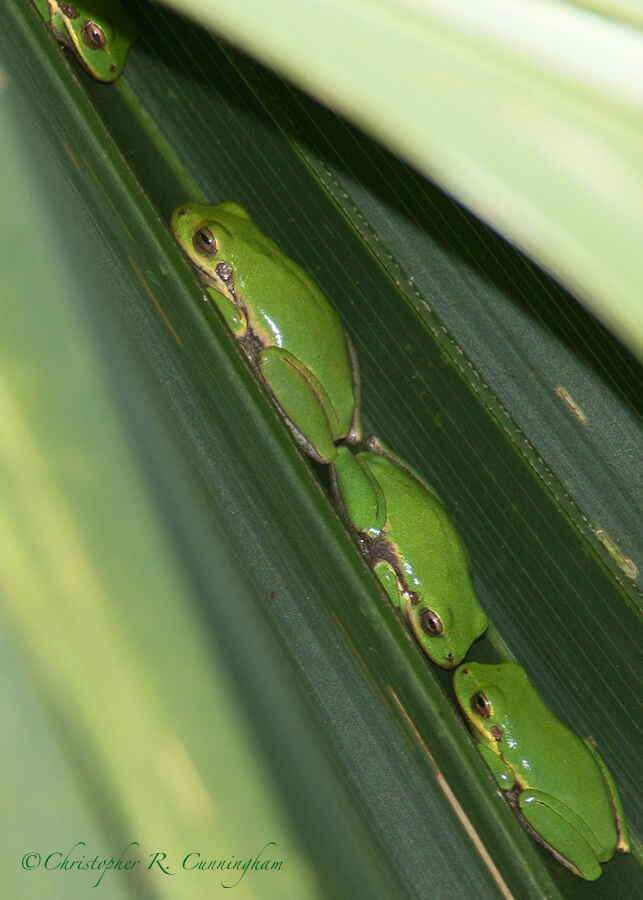
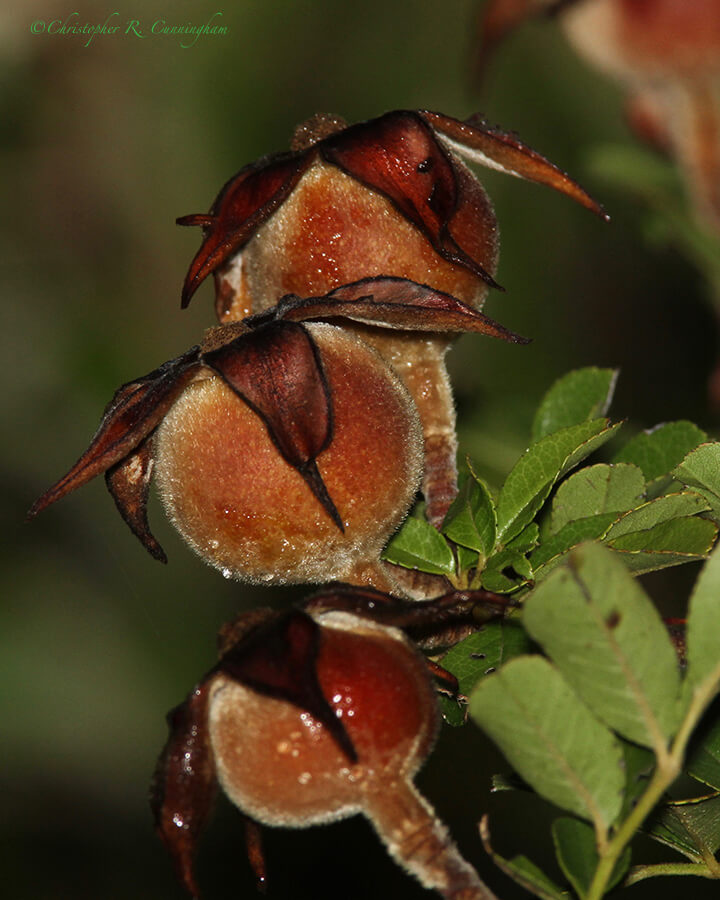
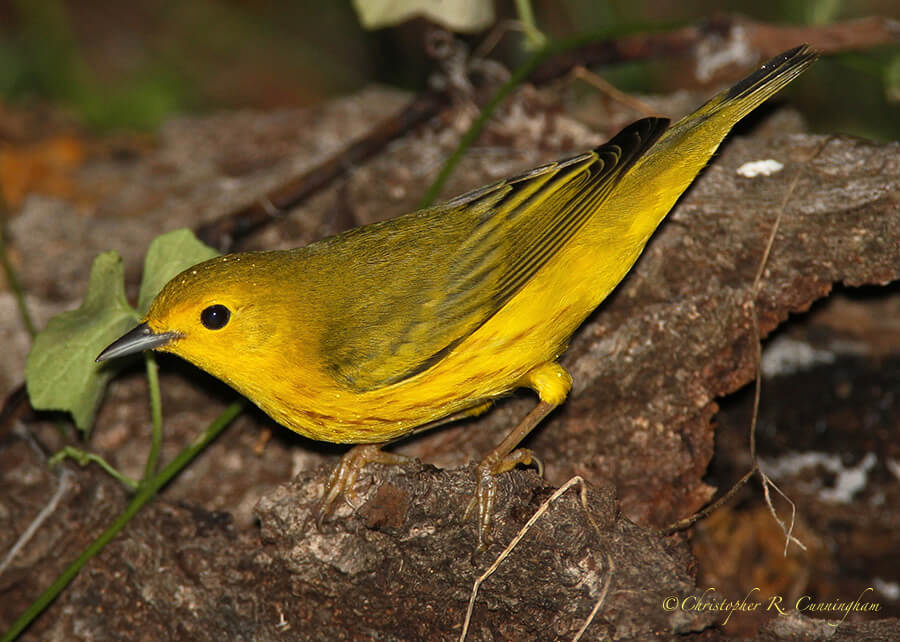
Next down the coast is the Quintana Neotropical Migratory Bird Sanctuary. This is a small oak motte sanctuary. The trees are surrounded on the east side by a grassy area with scattered thickets. The central area of the sanctuary is rich in flowers, native and non-native. Cape Honeysuckle is especially prominent. For us, the main significance of this sanctuary is its proximity to Bryan Beach. Sometimes if Bryan Beach and the lagoons behind are not particularly birdy, we will divert to Quintana. As in the case of Boy Scout Woods, Quintana is very well known to Texas birders so I will limit my commentary.
The most western (and southern) of the migrant traps we frequent is Joan and Scott Holt Paradise Pond on Mustang Island in the city of Port Aransas, Texas. This tiny preserve is a cluster of trees and brush around the only source of freshwater in the vicinity, a small pond on a perched (fresh) water table. We have not been here in over a year, and I have read about a project to remove the Brazilian pepper-trees that have invaded Paradise Pond and displaced many of the willow trees that make the spot so attractive to migrating songbirds. On one visit, a talkative old-timer told of times in the 60’s and 70’s when the area was covered in flocks of Wilson’s Warblers. “Now,” he said “people get excited when they see one.”
Paradise Pond is really a wonderful place to visit in the winter as well as during migrations. And because it is centrally located within a cluster of fantastic cool weather birding locations along the Coastal Bend (e.g., Leonabelle Turnbull, “Charlie’s Pasture”), you can easily bird Paradise Pond if you get tired of chasing ducks and shorebirds around.
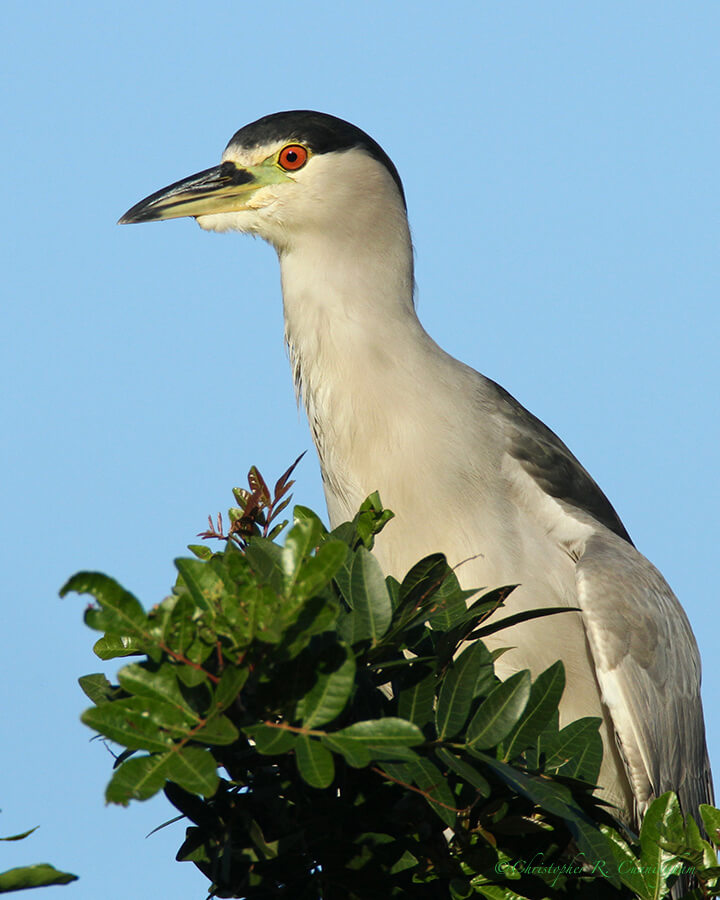
Finally, as I look forward to retirement and begin to draw up plans, I think that one of the first big trips that we’ll take will be a road trip that incorporates as many songbird migrant traps as possible. I can envision spending most of some future April slowly drifting from one coastal hotspot to another.
One of the many positives of birding migrant traps is that when the day is done, I can say goodbye to the bugs and closeness of the forests and thickets, drive or walk down to the beach, and capture some golden hour images of waders or shorebirds. While there, I hopefully will not find many colorful little bodies in the surf.
I am not one who seeks fallouts, and I fret a bit when major storms blow out of the north during spring migration—just like I fret when I see house cats prowling around bird sanctuaries. Neotropical migrant songbirds are facing some ferocious head-winds these days, natural and man-made. The most many of us can do is get out of their way. Keep our cats inside, mark our windows, and plant a few native food plants around our parks and yards. Let’s see if we can share the planet with the birds that remain.
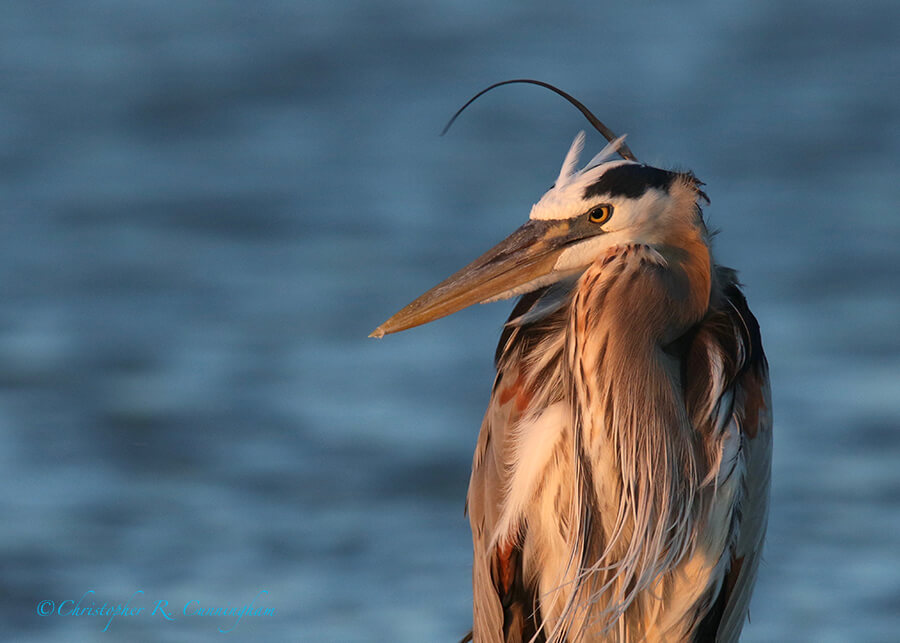
©2016 Christopher R. Cunningham. All rights reserved. No text or images may be duplicated or distributed without permission.